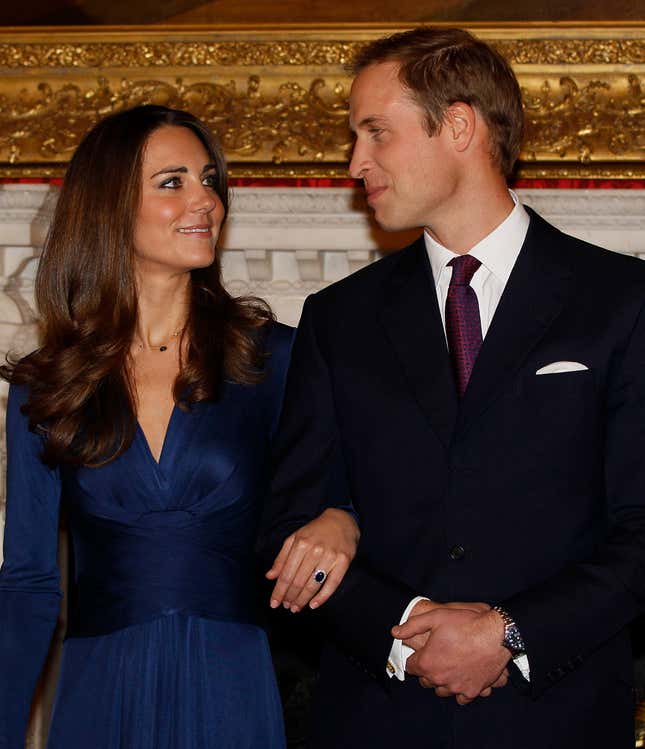Many clothing and jewelry purchases are fraught with emotions that defy reason, but perhaps none so much as the diamond engagement ring.
“That has a monetary value that you wouldn’t think would exist,” said Anne Bowers, an associate professor at the University of Toronto’s Rotman School of Management.
Bowers attempted to put a number on that value in a 2015 study she published in Advances in Strategic Management. She analyzed nearly 15,000 rings for auction on eBay, and also ran an experiment whereby she offered a diamond ring for sale three different ways. In each case, the ring—a .70 carat round brilliant cut diamond in an 18kt white gold band—showed an opening bid of $300, and an original retail price of $3,500.
The only difference was the backstories.
In one description, she stated, “Due to a divorce, I am auctioning this gorgeous .70 carat diamond ring…Since my ex and I split up I don’t wear it anymore, but someone else should!” In another she claimed “I am still happily married—I am selling the ring because I prefer to wear only a wedding band because I work with my hands.” In the third, the “seller” was simply a store with an overstock of new rings.
The “tainted love” discount
Bowers found that on average, engagement rings with a history of divorce fetched prices 26% lower than those with a “happy marriage condition,” and 33% lower than new rings—about $550, $740, and $820 respectively. This was consistent with the eBay selling data of the thousands of engagement rings Bowers analyzed.
“You can take two things that are visually and structurally identical,” she said. “We ascribe different value to them, because of the story attached to them.”
When it comes to engagement rings, that story is paramount.
The diamond dream
Largely thanks to a mid-century marketing campaign engineered by De Beers, the solitaire diamond ring has come to represent the commitment, love, and strength of one’s relationship. With that campaign, the mining company created what it refers to internally as “the diamond dream,” namely “the allure that diamonds have for consumers, based on their association with romance and a sense of the eternal, and the fact that they are seen as a lasting source of value.”
Call it sentimental value or emotional weight; this diamond dream is what makes an engagement ring worth so much more than the sum of its parts.

So why would anyone disclose that a ring came from a divorce, you might wonder? For starters, because they’re going through a tough time. It’s easy to imagine that putting an engagement ring up for sale might be a heartbreaking step in one’s separation. In reading hundreds of such ring descriptions, Bowers said she noticed “a lot of emotional catharsis.”
Another reason for revealing what Bowers calls a ring’s “tainted association” is that it helps to establish a seller’s legitimacy. In other words, the diamond isn’t fake or stolen.
“[Buyers] rated the divorced ring to be the most likely to be authentic,” said Bowers. “But that didn’t mean they wanted it.”
A stake in our superstition
Recycled diamonds such as these make up less than five percent of the polished diamond market, despite the fact that they are plentiful—and often, stunning. That’s good news for mining and jewelry companies, of course, which are heavily invested in the market for new stones. For that reason, the idea of a diamond being “tainted” or haunted by its past serves the interests of these companies.
Our superstition helps squash the secondary market for diamonds.
Bowers said she has noticed high-volume buyers of rings on eBay—people purchasing 40-60 rings per year—who likely scrub the stones of their origin stories before returning them to the market, free of “taint.”
For the average buyer, it could be a great way to get an inexpensive diamond.
“If you’re not emotionally connected to this,” said Bowers, “you can absolutely get amazing deals.”
